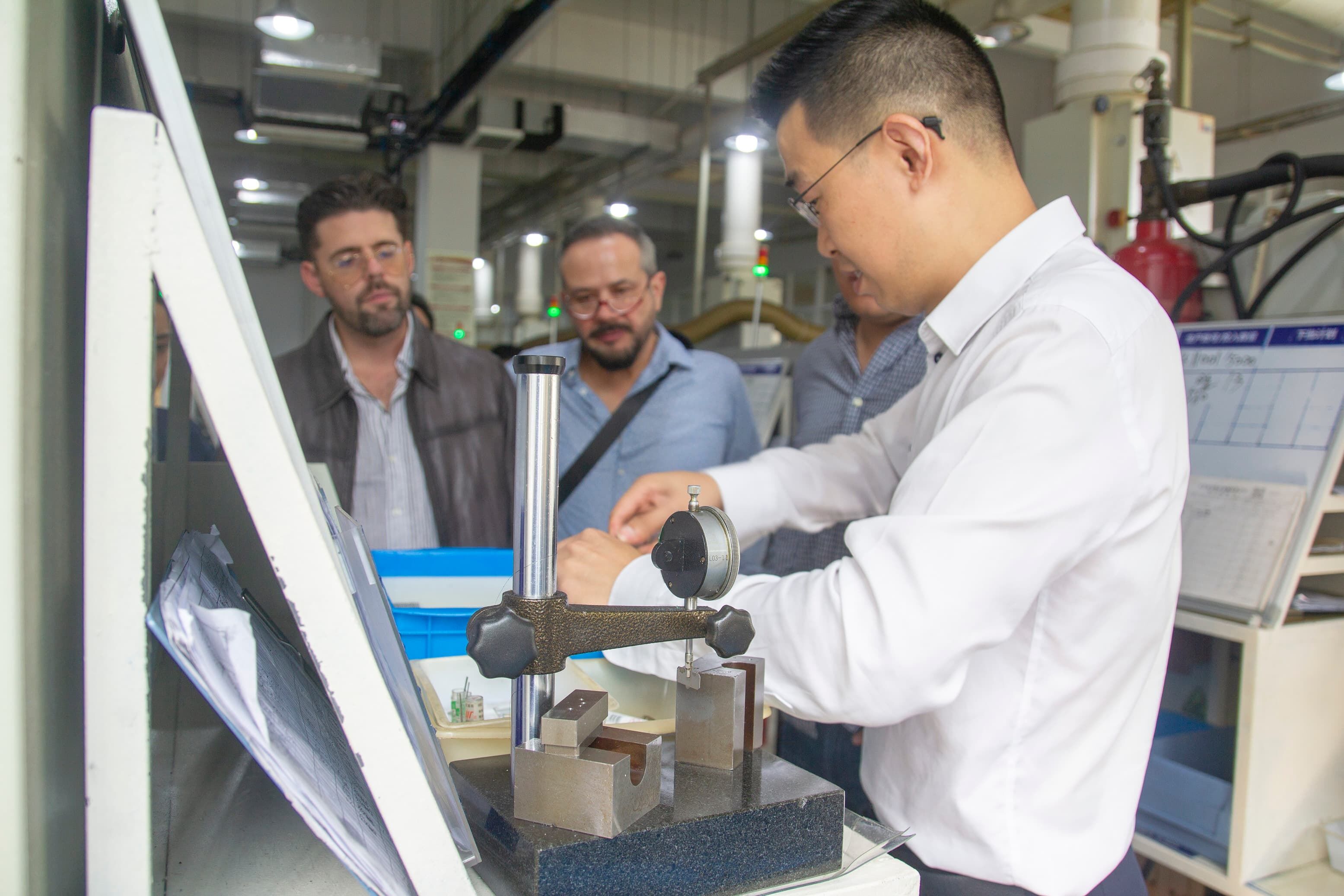Introduction
Orthopedic surgery plays a crucial role in restoring mobility and functionality, particularly following fractures and debilitating injuries. Integral to this field is the use of trauma locking plates, which have significantly enhanced surgical outcomes. These specialized devices provide superior stability and support during the healing process, overcoming many of the limitations associated with traditional treatment methods. By effectively immobilizing fractures and offering consistent pressure at the fracture site, trauma locking plates are pivotal in promoting better patient recovery and rehabilitation.
What Are Trauma Locking Plates?
Trauma locking plates are specialized implants used in orthopedic surgery to stabilize fractures. They consist of metal plates integrated with locking screws, which provide a rigid framework essential for bone healing. Unlike traditional plates that rely on friction between screws and bone for stability, locking plates use a threaded connection between the plate and screw, offering increased angular stability. This design not only gives superior mechanical support but also minimizes micromovement at the fracture site, thus promoting optimal healing conditions.
There are various types of trauma locking plates tailored to address different fracture scenarios and anatomical sites. For instance, Locking Compression Plates (LCPs) are versatile, suitable for both complex and simple fractures. Periarticular plates, on the other hand, are designed for fractures near joint surfaces, ensuring the preservation of joint function post-surgery. Each type is carefully selected by surgeons based on the fracture's complexity and location, ensuring personalized patient care and successful surgical outcomes. Transitioning from traditional methods to these advanced plates has revolutionized fracture treatment, offering improved healing and patient comfort.
Benefits of Trauma Locking Plates
Trauma locking plates provide enhanced structural stability, offering significant advantages over traditional fixation methods. These plates ensure superior load distribution across the fracture site, significantly reducing the risk of refracture. This stability is crucial for maintaining proper alignment and promoting effective osteosynthesis. Additionally, the locking mechanism of these plates allows for angular stability, which is often lacking in conventional plates, thus enabling reliable and consistent fracture healing.
Another significant benefit of trauma locking plates is their design, which minimizes soft tissue injury. The advanced contouring and less invasive surgical techniques associated with locking plates contribute to reduced trauma to the surrounding soft tissues. This not only decreases postoperative pain but also accelerates recovery time for patients. By preserving soft tissue integrity, locking plates facilitate a quicker return to normal daily activities, making them a preferable choice in many orthopedic surgeries.
Furthermore, the use of trauma locking plates is linked with reduced infection rates post-surgery. This reduced risk of infection is attributed to the less extensive soft tissue dissection required during their implantation. Studies have shown that minimizing tissue disruption fosters an environment conducive to healing, thereby lowering the likelihood of infection. Consequently, trauma locking plates not only enhance the mechanical stability of fractures but also contribute to better overall healing outcomes by reducing surgical complications.
Applications in Orthopedic Surgery
Trauma locking plates are extensively employed in orthopedic surgery, predominantly for fracture fixation. By providing robust stabilization, particularly in cases involving long bones and complex injuries, they outperform traditional methods, ensuring more effective fracture healing. Their design promotes optimal conditions for bone regeneration, minimizing the risk of complications such as non-union.
When it comes to complex bone repairs, trauma locking plates are irreplaceable. Traditional plating systems often fall short in providing the necessary support for intricate fractures, but locking plates, with their unique locking mechanism, offer an ideal solution. This crucial feature makes them the preferred choice in situations where achieving adequate stabilization is challenging.
Moreover, the use of trauma locking plates aligns well with minimally invasive techniques. The adaptability of these plates supports surgical approaches that reduce recovery time and enhance surgical outcomes. By minimizing tissue disruption and promoting faster healing, these plates not only improve patient recovery but also lessen hospital stays and overall healthcare costs. As a result, the integration of trauma locking plates into modern orthopedic surgical practices demonstrates a commitment to enhancing patient care and surgical success.
Impact on Patient Recovery and Mobility
The use of trauma locking plates in orthopedic surgery has been linked to faster healing times. Research has indicated that these plates can potentially reduce recovery periods by up to 30%. This expedited healing process allows patients to resume their daily activities more promptly, enhancing their overall rehabilitation experience.
In addition to accelerating healing, trauma locking plates significantly improve functional outcomes for patients. Post-surgical recovery often involves improved mobility, which allows individuals to regain normal function more quickly compared to traditional fixation methods. This enhancement in mobility is crucial for patients aiming to return to work, sports, and other physical activities.
Furthermore, the impact of locking plates on patient satisfaction and quality of life is profoundly positive. Many patients report experiencing less pain and a more rapid recovery, which contributes to an increase in satisfaction with their surgical outcomes. This reduced discomfort and swift return to normalcy greatly enhance the quality of life, making these plates a preferred choice for many undergoing orthopedic procedures.
Challenges and Solutions
The application of trauma locking plates involves addressing patient-specific variables. Variations in individual anatomy and the presence of comorbidities can complicate the use of these plates. This emphasizes the need for meticulous pre-surgical planning. By understanding the unique anatomical features and health conditions of each patient, surgeons can tailor their approach, minimizing risks and enhancing surgical outcomes.
Surgical technique challenges are another important consideration. The success of using trauma locking plates heavily depends on the surgeon's experience and skill set. To tackle this issue, continuous training and accessible educational resources are vital. Workshops, seminars, and simulation-based training can equip surgeons with the latest techniques, ensuring they are well-prepared to handle complex cases effectively.
Addressing complications is crucial for ensuring successful outcomes with trauma locking plates. While these devices are generally reliable, issues like non-union or hardware failure can occur. In such instances, alternative fixation methods or advanced surgical interventions might be necessary to correct the problem. Staying abreast of the latest innovations and treatment methods can significantly aid surgeons in managing these complications, thereby improving patient recovery and reducing risks.
Future Trends in Trauma Locking Plates
The landscape of trauma locking plates is undergoing significant changes driven by advancements in material technology. Innovations in the development of biocompatible materials hold the promise of enhancing patient outcomes by potentially reducing complications associated with traditional metals. As materials like advanced ceramics and polymers are researched, they may offer superior compatibility and resilience, enhancing the healing process and patient comfort.
A notable trend is the personalization of surgical solutions through emerging technologies like 3D printing, which allows for the customization of locking plates tailored to individual patients' anatomical structures. This approach maximizes the fit and efficiency of the implants, minimizing the risk of complications and improving the overall effectiveness of fracture treatments.
Moreover, the integration of trauma locking plates with advanced surgical techniques, such as robotic-assisted surgery, shows potential for enhancing precision and minimizing surgical trauma. These technologies are expected to facilitate more accurate implant placements and improve surgical outcomes by minimizing human error. As these technologies evolve, they could redefine standard practices in orthopedic surgeries, leading to better patient experiences and long-term recovery outcomes.
FAQ
What are trauma locking plates used for?
Trauma locking plates are used in orthopedic surgery to stabilize fractures and provide structural support during the healing process.
How do trauma locking plates differ from traditional plates?
Unlike traditional plates that rely on friction between screws and bone, trauma locking plates use a threaded connection between the plate and screw for increased angular stability.
What are the benefits of using trauma locking plates?
Benefits include enhanced structural stability, reduced infection rates, and minimized soft tissue injury, promoting faster recovery and improved patient outcomes.
Are there any challenges with using trauma locking plates?
Challenges include addressing patient-specific variables and ensuring surgeons are well-trained, as the surgical technique is crucial for successful outcomes.
What future trends are expected in the development of trauma locking plates?
Future trends include the use of biocompatible materials, 3D printing for personalization, and robotic-assisted surgery for improved precision and reduced trauma.
 EN
EN
 FR
FR
 ES
ES
 AR
AR

